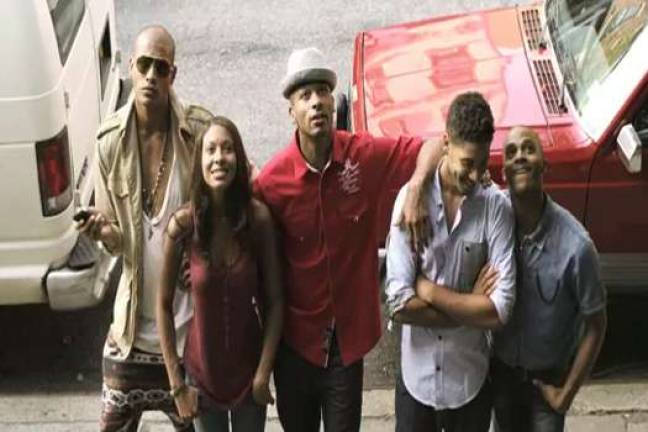The title of The Skinny refers to gossip?the low-down between friends?but read another way (in the credit sequence's colorful graphics) it also refers to sexual opportunities in New York City. Writer-director Patrik-Ian Polk is interested in the erotic possibilities found by five young black gays, recent Brown University graduates, who reunite during New York's Pride Week celebrations. Gorgeous, young, educated black gays like these don't appear in movies by Gus Van Sant, Todd Haynes nor in mainstream Hollywood films. They hail from a society that only Polk puts on screen?a world recognizably his own vision like Wes Anderson's and equally as affecting. By placing them in New York, Polk gives his characters a cultural coming-out (in the debutante sense) which also means advancing upon the bourgeois mainstream already so well represented by media-empowered white gays that these characters seem new?in fact, almost alien to the New York Times whose dismissive review linked Polk's characters to "an invisible demographic." Nothing could be more clueless?or so tragically revealing of mainstream media's self-important blindness. Fact is, as Polk casts and photographs his characters, they are visualized quite handsomely. Joey's joking lament "Who knew an Ivy League degree in semiotics would be so useful!" turns out to perfectly define the film's success. These good-looking black folk are living signs?of black, gay social progress and arrival?although the mainstream media might label them "minorities". Magnus (Jussie Smollett, a Prince-look-alike but with dimples) breaks up with his thug-hot boyfriend Ryan (Dustin Ross), while virginal Sebastian (Blake Young-Fountain) hankers after his studly best friend Kyle (Anthony Burrell). Beautiful British dyke Langston (Shanika Warren-Markland) and the elegantly masculine Southern queen Joey (Jeffrey Bowyer-Chapman) watch from the sides, nervous about making their own hook-ups. This group resembles the ensemble of Polk's trailblazing LOGO-TV series Noah's Arc, but he's refined the stereotypes into more subtly-performed archetypes. These actors represent the range of urban black males less realistically than were the women in Pariah but more idealistically, like the co-eds in Whit Stillman's Damsels in Distress. Their rom-com search for love is also a quest for self-acceptance (infatuated Magnus opens the film kissing and grinning with emotional satisfaction) despite New York pressures of class, disease and insecurity that keep them from being carefree. Yet, Polk's characters seem charmingly carefree the same way as Anderson's. Polk finds comedy and drama in Magnus & friends' state of untested innocence. He has discovered a knack for personal identification and audience assent that sets him apart from more celebrated black or gay cineastes. This makes Polk not merely a queer filmmaker but part of the current brotherhood of genuine American Eccentrics. Would Gus Van Sant or Todd Haynes have the affectionate wit to lovingly stage a discussion about sexual hygiene? The Times' nonplussed reviewer could only belittle the moment as a PSA rather than a disclosure of brotherly intimacy (made so by Bowyer-Chapman's winning sense of concern and confession). Aspects of The Skinny indeed have a gossipy style of instruction?it's part of unfortunate p.c. habits Polk picked up from television. His style could be subtler (the images could use some concentration) still it's imminently watchable. And populist in ways most gay-identified filmmakers never achieve having worked themselves into the specialized ghetto reserved for detached artistes like Van Sant and Haynes. Only John Cameron Mitchell and Ira Sachs are trying to work themselves out of that rut. To read the full review at City Arts [click here. ](http://cityarts.info/2012/06/16/the-queer-eccentric/)

